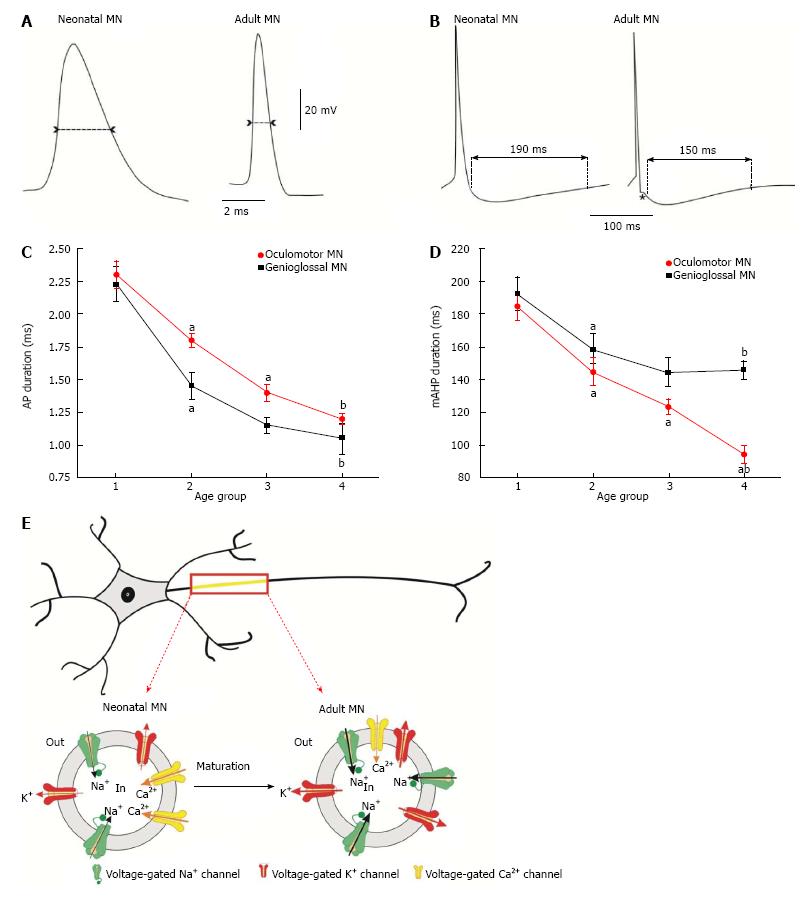Copyright
©The Author(s) 2015.
World J Neurol. Dec 28, 2015; 5(4): 113-131
Published online Dec 28, 2015. doi: 10.5316/wjn.v5.i4.113
Published online Dec 28, 2015. doi: 10.5316/wjn.v5.i4.113
Figure 5 Postnatal maturation of action potential characteristics of motoneurons from genioglossal and oculomotor nuclei.
A and B: Recordings illustrating a representative action potential from one neonatal and one adult MN, at two different time scales, emphasizing the duration of the action potential (A) and the duration of the medium afterhyperpolarization phase of the action potential (B). Note the shortening in both phases during development. Also remarkable the presence of afterdepolarization phase in the adult MN (see asterisk); C and D: Plots illustrating the changes on action potential duration (C), and medium afterhyperpolarization phase duration (D) during postnatal development for GG and OCM MNs. Both populations show a decrease in these parameters. However it should be noted that, in GG MNs, changes in the afterhyperpolarization phase cease to decrease at the second postnatal week and, in the OCM MNs, this decrease is bigger and continuous up to P30; E: Schematic drawing illustrating proposed differences in ion channels (number and kinetics) underlying action potentials between neonatal and adult MNs. Note, for the adult MN, a higher number of potassium and sodium voltage gated channels and larger conductances (thick arrows) when compared with the neonatal MN. We also proposed the existence of less voltage gated calcium channels with lower conductances (thin arrows) for the adult MNs. The "a" indicates statistical significance between two consecutive age groups; and the "b" represents statistical significance between age group 1 and age group 4. The age groups 1,2,3 and 4 correspond to P1-P5, P6-P10, P11-P15 and P21-P30, respectively. The data from GG[4] and OCM[10] come from previous studies. MNs: Motoneurons; GG: Genioglossal; OCM: Oculomotor.
- Citation: Carrascal L, Nieto-González J, Pardillo-Díaz R, Pásaro R, Barrionuevo G, Torres B, Cameron WE, Núñez-Abades P. Time windows for postnatal changes in morphology and membrane excitability of genioglossal and oculomotor motoneurons. World J Neurol 2015; 5(4): 113-131
- URL: https://www.wjgnet.com/2218-6212/full/v5/i4/113.htm
- DOI: https://dx.doi.org/10.5316/wjn.v5.i4.113









